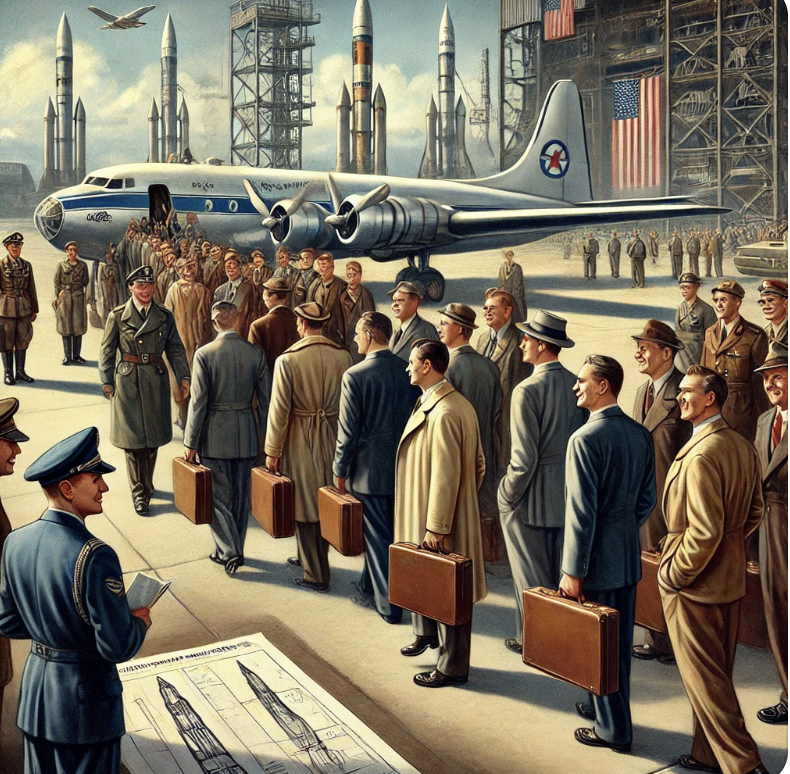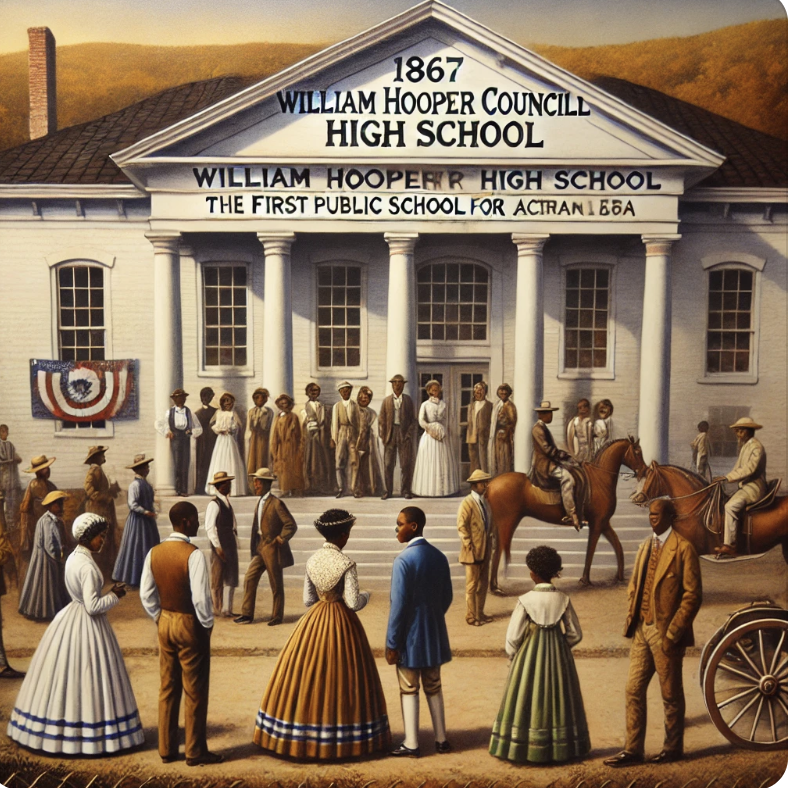The Smartest City in Alabama and Its Black History
Unearthing Huntsville’s Black History: Progress Amid Complexity
Living here in Alabama for over 20 years has taught me that Huntsville, Alabama, is the smartest city in the state. I’ve heard it described as a beacon of progress and innovation, yet its history is layered with complexities. One story in particular stuck with me—an Afro-Latina from the Dominican Republic, who was stationed in Ft. McClellan, shared her journey. She told me about the warnings she received about sundown towns, areas unsafe for people of color after dark, when she first arrived in Alabama. Eventually, she moved to Huntsville, where she, a dark Latina, and her children never experienced the sting of discrimination. Her story made me curious: does Huntsville have a history of segregation, violence, and racism?
I met Rosa Toussaint through social media. She was actively involving thousands of Latinos in Huntsville, uniting a community by spreading important news and connecting them to her church. I was so impressed by Rosa that I reached out to her and she has been my friend since. She moved back to the Dominican Republic a few years ago, and I can’t wait till her book gets published so everyone could hear her story. Here’s a book that she published for anyone who desires success and victory in overcoming personal, mental, and spiritual challenges. To put an end to the frustrating obstacles that try to prevent a life of quality and the fullness of your destiny! For the use in your church, Bible study group, professional health group, entrepreneurship seminars, or mission trips. This book is in Spanish, so if you are a spanish learner, or bilingual, this would be great for you! Check out the podcast episode with Rosa and her experiences of racism and colorism in the U.S.
And then there’s the story of the 118 German rocket scientists who were brought to Huntsville under Operation Paperclip, a U.S. government program that controversially welcomed these scientists—many of whom had been members of the Nazi party. Their contributions to the U.S. space program were groundbreaking, but this raises important questions: How did Huntsville reconcile the presence of these scientists with its Black residents’ ongoing struggle for equality? How does a city with such a multifaceted past become the most progressive area in Alabama?
Huntsville’s Black History: Foundations of Inequality
Huntsville’s early economy thrived on cotton, and enslaved African Americans were the backbone of this industry. By 1860, Madison County, where Huntsville is located, was one of the largest slaveholding counties in Alabama. After the Civil War, the Reconstruction era brought fleeting progress for Black residents, with the establishment of schools and brief political representation. However, these gains were quickly undone during the Jim Crow era, which entrenched segregation and systemic racism.
In the chaos following World War II, the U.S. government faced many difficult decisions, including what to do with the Third Reich's scientific minds. These were the brains behind the Nazis' once-indomitable war machine. So began Operation Paperclip, a decades-long, covert project to bring Hitler's scientists and their families to the United States.
Many of these men were accused of war crimes, and others had stood trial at Nuremberg; one was convicted of mass murder and slavery. They were also directly responsible for major advances in rocketry, medical treatments, and the U.S. space program. Was Operation Paperclip a moral outrage, or did it help America win the Cold War? Click on the image to get the full story.
Operation Paperclip: The German Scientists’ Arrival
After World War II, the U.S. government secretly relocated more than 1,600 German scientists, engineers, and technicians, including 118 to Huntsville, under Operation Paperclip. Among them was Wernher von Braun, the rocket engineer who would become the face of NASA’s Apollo program.
However, many of these scientists had ties to the Nazi party, some even accused of war crimes or of using forced labor in their wartime projects. Their presence in Huntsville sparked quiet unease among locals and invited international scrutiny. The scientists were seen as symbols of technological prowess, but the stigma of their past lingered.
Rosa’s book description: The new Hispanic/Immigrants most understand that just because they have not been discriminated against or received racist treatment it does not mean that racism does not exist. Blacks have been suffering for years because of the mistreatment of the majority of whites and it needs to stop.
I believe this is the time. I do not want the black race to be superior. I just do not want the white race to continue with their superiority. I just want equality for every human being that has been created in the image of God. We all need to be on the same level, to have the same importance, to be born with the same privilege, because all race colors matter.
I believe that my story will help whites, Hispanics and immigrants see that for many years, blacks have been treated with injustice. 2020 is the year to make a change and to let kindness, empathy and equality take their course. I am looking forward to the day when we will be able to fully obey our creator’s request to love our neighbor as ourselves.
This book is not to shame whites, nor Hispanics but to educate, because having black skin, big lips, coarse hair and not a pointed long nose, appear to give permission to some to mistreat me without having to be concerned about being punished for this behavior.
We can no longer pretend that all is well in U.S and other nations for those that look like me, because it’s not. I know that humans will never be able to have a perfect society with no problems among the races because we humans are imperfect. But what I do know is that if we force ourselves to be kind to each other and to have empathy we can live in a world where no race is superior to the other, where we can all be one obeying the golden Rule.
Racial Tensions in a Changing City
The arrival of these German scientists coincided with the Civil Rights Movement, a period when Black residents of Huntsville were fighting for basic rights. The stark contrast was undeniable: the U.S. government offered homes, jobs, and opportunities to the German scientists, while Black residents continued to face segregation and discrimination.
Despite these challenges, Huntsville’s Black community showed resilience. Protests, sit-ins, and legal battles eventually led to the desegregation of schools, restaurants, and public facilities in the 1960s. Notably, Huntsville achieved integration with less violence than other Southern cities, hinting at the progressive tendencies that would later define it.
Key Moments in Huntsville’s History
Integration of Schools (1963)
Huntsville became one of the first Alabama cities to integrate its schools. This moment symbolized a step forward for racial equity, even as resistance persisted elsewhere in the state.Space Race Contributions by Black Workers
While the German scientists were lauded for their achievements, Black workers played vital yet often overlooked roles in Huntsville’s space race. From custodians to machinists and engineers, Black residents were integral to the city’s success during this era.Civil Rights Movement Victories
The peaceful desegregation of public spaces in Huntsville contrasted with the violent clashes seen in cities like Birmingham and Selma. This relative calm allowed for gradual, meaningful progress in race relations.
The first African American public high school in Huntsville, Alabama- James Hopper School.
James Hopper School holds a significant place in Huntsville’s history as the first public school for African Americans in the city. The school’s history is intertwined with the struggle for educational equity and civil rights in the South during the late 19th and early 20th centuries.
The Founding of James Hopper School
James Hopper School was founded in the late 1800s, in an era when racial segregation was legally enforced by Jim Crow laws across the Southern United States. Education for African Americans was severely limited, and schools for Black children were often underfunded and overcrowded. In Huntsville, there was no public schooling available for African American children prior to the establishment of James Hopper School.
The school was named after James Hopper, a prominent African American community leader and educator in Huntsville. He played a key role in advocating for education for Black children, and his efforts were instrumental in the establishment of the school. Hopper’s advocacy came during a time when African Americans in Huntsville were fighting for their rights, including access to education.
Early Challenges and Growth
James Hopper School was originally housed in a small, overcrowded building. It was established as a response to the community's demand for educational opportunities for Black children, a stark contrast to the well-funded schools available to white children in the city. Like many other schools for African Americans in the South, James Hopper faced numerous challenges, including inadequate funding, lack of resources, and resistance from those who opposed educating Black children.
Despite these obstacles, the school became an important center for learning and community development for African Americans in Huntsville. It helped lay the foundation for future generations of Black students, many of whom would go on to become influential figures in their communities.
Integration and Legacy
James Hopper School served the African American community for several decades, but as the Civil Rights Movement gained momentum in the 1950s and 1960s, the fight for desegregation began to make strides across the South. In 1963, as part of a larger effort to integrate public schools in Huntsville, James Hopper School was eventually closed, and its students were integrated into other public schools in the city.
Though the school itself no longer exists, the legacy of James Hopper School lives on in the lives of those who attended and the community's ongoing efforts to promote educational equality. The school stands as a symbol of the resilience and determination of Huntsville’s African American community in the face of segregation and discrimination.
Today, the history of James Hopper School is remembered as part of the broader narrative of African American education in the South and the continued fight for equality in public schools. The school’s story is a testament to the power of education in overcoming adversity and shaping future generations.
Book Spotlight: Rey’s Journey Through the Jungles of Panama
Don’t miss the inspiring story of Rey, a young boy navigating life in the lush jungles of Panama while balancing the challenges of being a resourceful yet underprivileged child. This heartfelt immigration story, told through Rey’s eyes, offers a captivating perspective that resonates with readers of all ages.
Written by Reinaldo Whyte, this book was inspired by his students in the English Language program, motivating them to expand their vocabulary and embrace their potential. It’s more than just a story; it’s a bridge to understanding resilience, determination, and the power of education.
Order your copy today by clicking on the book image and immerse yourself in this unforgettable journey!
Balancing Progress with Stigma
The presence of the German scientists in Huntsville created an unusual dynamic. On one hand, the city was hailed as a center for innovation and technological achievement, drawing talent from across the world. On the other hand, the legacy of racism and segregation weighed heavily on its Black residents. How could a city welcome individuals with ties to one of history’s most oppressive regimes while many of its own citizens were denied basic rights?
This duality underscores Huntsville’s complex narrative: a city that simultaneously fostered groundbreaking innovation and struggled with the inequalities of its past.
Huntsville Today: A City of Opportunity
Today, Huntsville is recognized as one of Alabama’s most diverse and forward-thinking cities. With its thriving tech industry, inclusive cultural events, and efforts to preserve Black history, the city has come a long way. But its journey also serves as a reminder of the work that remains to be done in reconciling past injustices with future progress.
The Afro-Latina mother’s story of finding acceptance in Huntsville reflects the city’s strides toward equality. Yet the legacy of those German scientists reminds us that progress often comes with difficult questions and uncomfortable truths.
As we look to Huntsville’s future, it’s worth asking: How can the city continue to build on its legacy of innovation while addressing the inequities that persist? Let’s keep the conversation going.


























